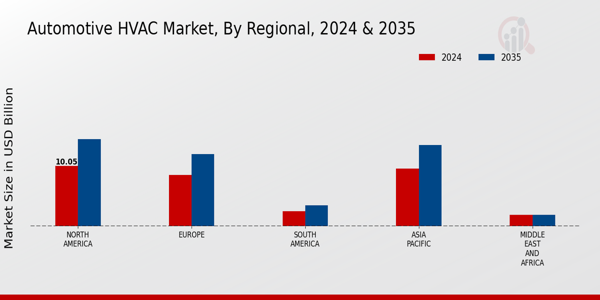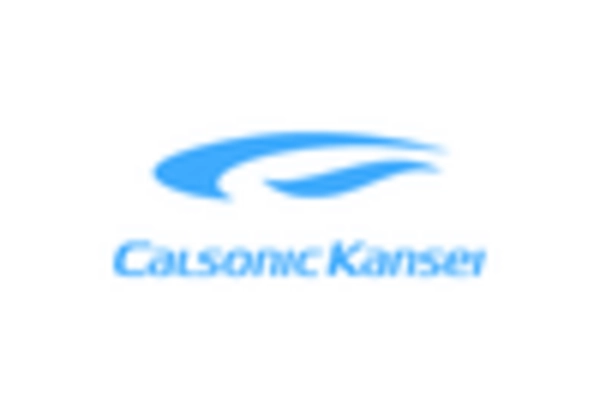The Automotive HVAC Market is a dynamic sector characterized by intense competition, driven by the demand for enhanced passenger comfort and vehicle air quality.
In recent years, technological advancements have played a pivotal role in shaping the market, leading to the integration of innovative heating, ventilation, and air conditioning systems that are more efficient and environmentally friendly.
Various factors, including the rising standards for vehicle climate control, the transition towards electric vehicles, and the growing emphasis on sustainability, influence the market's competitiveness.
Manufacturers are continuously seeking to expand their product offerings and improve system performance, resulting in a proliferation of HVAC solutions tailored for diverse automotive applications.
This competitive landscape is also marked by strategic partnerships, mergers, and acquisitions, as companies strive to enhance their market share and meet the evolving needs of consumers across global regions.
Sanden Holdings is a key player in the Automotive HVAC Market, recognized for its emphasis on innovation and product excellence. The company leverages advanced technology and engineering expertise to develop efficient cooling and heating systems tailored to the needs of the automotive industry.
Sanden Holdings has established a strong market presence by focusing on energy-efficient solutions that comply with stringent environmental regulations. Its commitment to research and development enables the company to introduce cutting-edge HVAC systems that enhance vehicle performance while minimizing energy consumption.
Furthermore, Sanden's robust supply chain and strategic partnerships have bolstered its ability to deliver quality products to various global automotive manufacturers, solidifying its reputation in the competitive HVAC landscape.
Continental is another significant entity within the Automotive HVAC Market, known for its comprehensive range of HVAC solutions designed for modern vehicles. The company offers an array of key products and services, including compact air conditioning units, electronic climate control systems, and innovative thermal management solutions that contribute to both passenger comfort and energy efficiency.
Continental's strong market presence is supported by its extensive expertise in engineering and its commitment to developing sustainable technologies. The company's strengths lie in its ability to integrate advanced electronics and digitalization into HVAC systems, enhancing overall vehicle functionality.
Moreover, Continental has pursued strategic mergers and acquisitions, allowing it to broaden its technological capabilities and expand its footprint in the global market. Through its dedication to innovation and customer satisfaction, Continental continues to be a competitive force, paving the way for the next generation of automotive HVAC systems.


















Leave a Comment